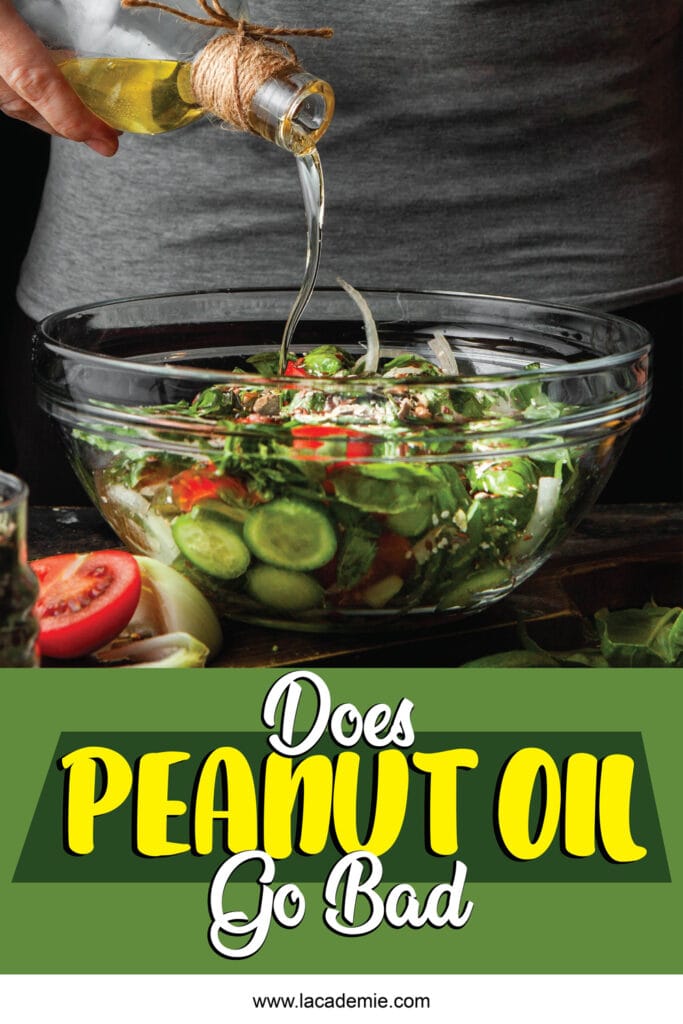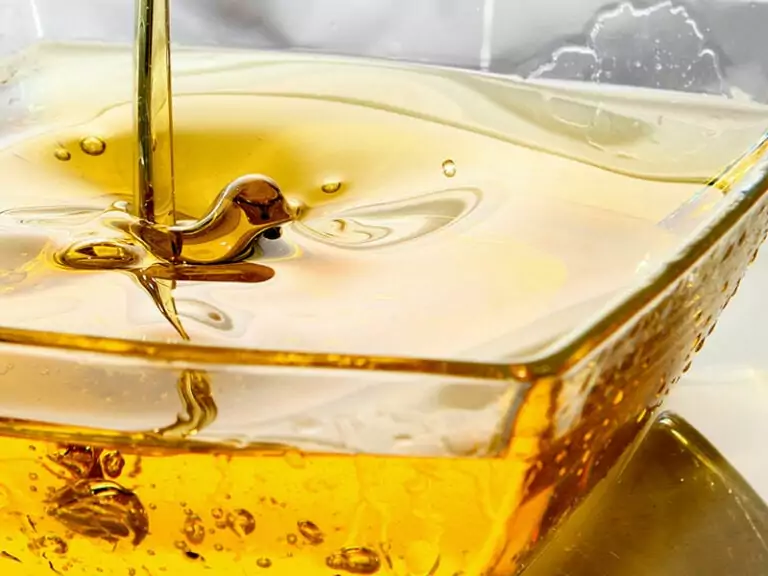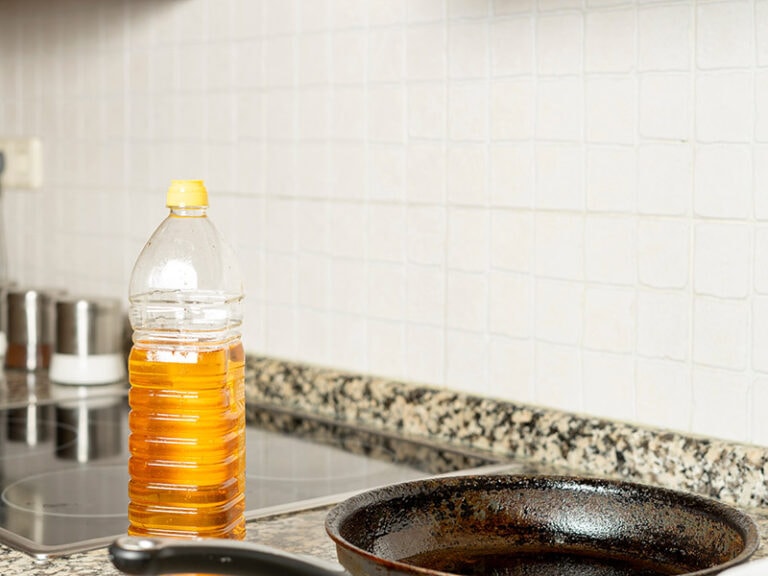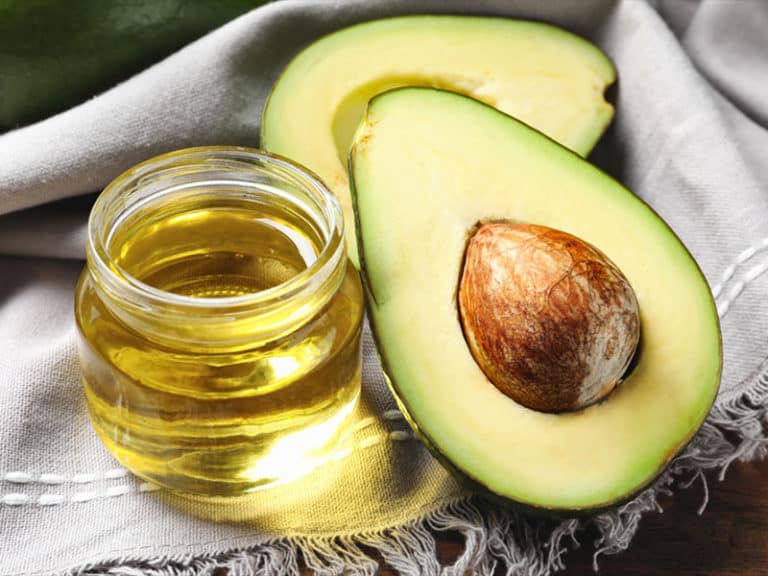So the question has to be discussed: “Does peanut oil go bad?” It’s safe to say that peanut oil is one of the healthiest choices for deep-frying and baking. Most home cooks keep this vegetable oil in their kitchens for infrequent use, yet not all are clear as to how long it can keep well.
This is also a common issue for home chef using sesame oil, coconut oil, and other vegetable oils. I’ve been asked questions like “Will my sesame oil spoil?”, “Can vegetable oil go bad?”, or “How likely is it for coconut oil to spoil?” so many times that they’re no longer surprising.
Luckily, like other vegetable-drive oils, peanut oil comes with a fairly long shelf life, but that doesn’t mean it’s impervious to deterioration.
In this in-depth guide, you’ll find all the answers for peanut oil’s shelf life, the most visible signs of early spoilage, and, most importantly, the best techniques to preserve the oil’s freshness in the long run.
Are you ready to make the best out of your bottle of peanut oil? Let’s get our exciting online cooking class started!

What Is Peanut Oil?
Peanut oil, which also goes by the name groundnut oil, is a type of vegetable-derived oil made from edible peanut plant seeds. This cooking oil has quite a high smoking point of around 450F, making it well-suited for high heat cooking methods.
This means that it’s one of the best oil varieties for deep-frying chicken, baking, and sautéing. The few oils with a higher smoke point I can think off the top of my head is avocado oil at 520F and safflower oil at 440F-520F.
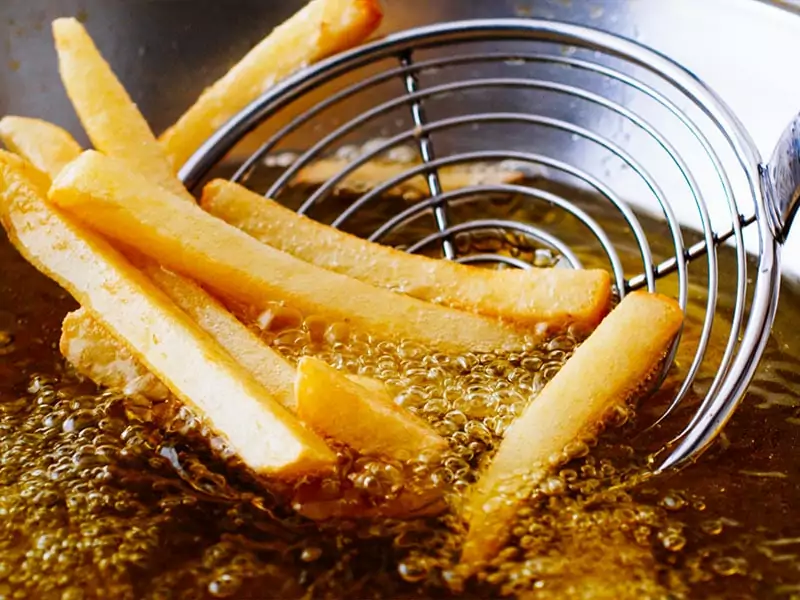
Like other vegetable oils, peanut oil is naturally free from cholesterol, trans fat, and low in saturated fats. This, along with its abundant source of vitamin E, makes it one of the most heart-healthy oils to incorporate into your diet in moderation.
Here’s a rundown on nutritional values for one tablespoon of peanut oil:
| Calories | 119 |
| Fat | 14 grams |
| Saturated fat | 2.3 grams |
| Monounsaturated fat | 6.2 grams |
| Polyunsaturated fat | 4.3 grams |
| Vitamin E | 11% of the RDI |
| Phytosterols | 27.9 mg |
There’re typically two main categories of peanut oils: gourmet and refined versions, each produced with different techniques.
Refined peanut oil is custom-made for those with a peanut allergy, considering all allergic proteins have been removed in processing. Meanwhile, gourmet oil doesn’t go through a refining process. It also brings out a more intense flavor and peanut aroma to enhance stir-fried dishes.
In general, this oil has a neutral, somewhat light, and nutty flavor, making it one of the best substitutes for sesame oil in a pinch. It’s also pale in color and brings out a nutty scent that perfectly complements any dish, especially for prepping delicious salads and Asian cuisines.
So, Does Peanut Oil Go Bad?
In short, yes. Compared to other oils, it’s safe to say that peanut oil does come with a longer shelf life, but it won’t last indefinitely. Here’s an in-depth answer to how long you can keep your peanut oil around through each stage of using it.
1. Unopened Peanut Oil
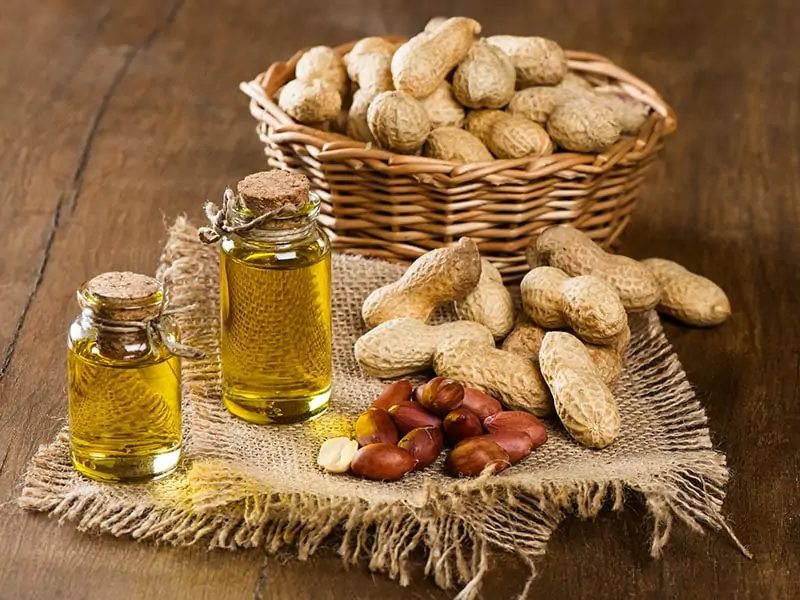
Like other types of cooking oils, peanut oil comes with a “Best By” or “Best If Used By” date on the bottle. This is the manufacturer’s estimation on how long the oil is supposed to remain at its best quality, which is usually 1-2 years or longer.
After the expiry date passes, the risks of rancidity gradually increase. But of course, it won’t just go bad overnight, as long as you keep it under proper storage conditions.
When kept outside, a tightly sealed, unopened bottle of peanut oil, in case the bottle remains undamaged and there’re no signs of spoilage, it’s still good for consumption for months, if not a few years, past its expiration date.
Though peanut oil doesn’t require refrigeration for storage, you can extend its shelf life by putting it in the fridge or freezer. Usually, this allows the oil to last roughly 3-4 years, depending on each specific brand and production process.
It’s important to note that once refrigerated, peanut oil’s taste and aroma tend to change. So if you don’t plan to keep it around for years before use, refrigeration may not be the best storage method for this vegetable oil.
2. Opened Peanut Oil
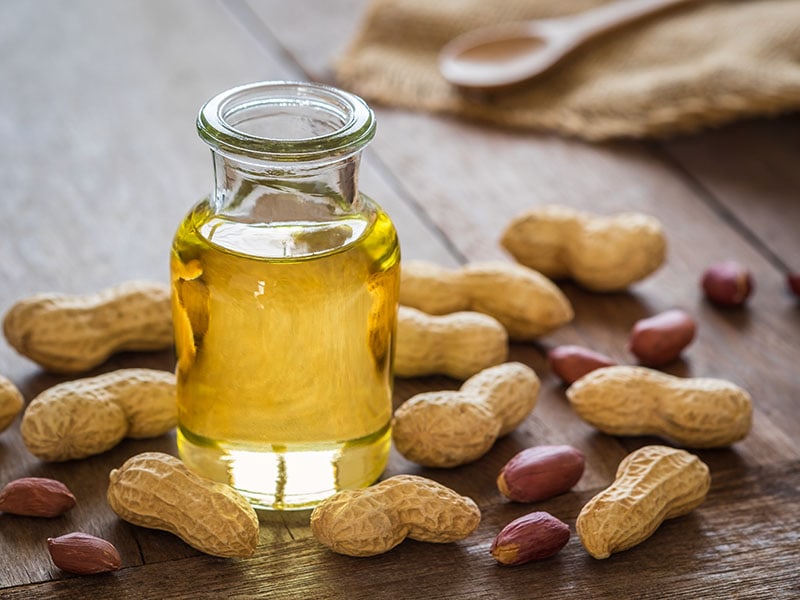
Once a bottle of peanut oil has been opened, the risks of its exposure to contributing factors that speed up its rancidity process become higher. As a result, the oil’s shelf life is significantly shortened, depending on its quality and how refined it was during processing.
If stored at room temperature, like in your pantry or on the shelf, an opened bottle of peanut oil keeps well for 6 months to 1 year at maximum. After each usage, be sure to close the lid tightly to prevent the oil from evaporating or spilling and keep out the unwanted air.
And if you feel like there’s some free space in your fridge, don’t be shy to put the bottle in there. Continuous refrigeration will help to prolong the oil’s shelf life by a couple of months, which is especially helpful if your bottle is near its expiry date.
3. Used Peanut Oil
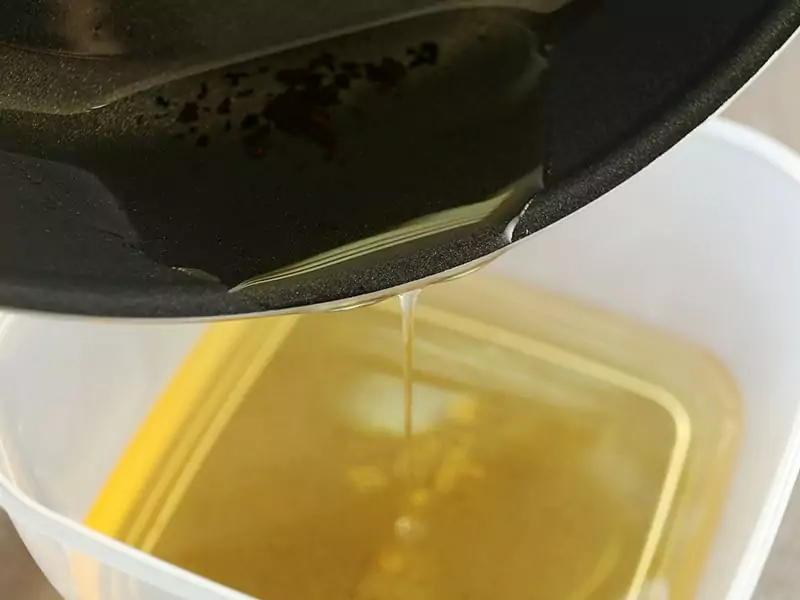
“Should I reuse the oil I used to fry my chicken?” – you might ask. Yes, it’s entirely possible to reuse peanut oil for another round of deep-fried chickens, fish, or turkeys. This is because peanut oil has a clean taste and a high smoking point, which makes it resistant to early spoiling and allows for multiple reuses.
On the flip side, though insignificantly, this type of oil might take up some of the flavors from the food that you fry it in. Thusly, it’s best not to use the batch of peanut oil that you’ve used for fried fishes to sauté chicken breasts unless you want your chicken to have a fishy note.
When stored properly, peanut oil can be reused up to 3-5 times before it needs to be disposed. Used oil has a much shorter shelf life than fresh oil, so you should use the same batch of oil within only a few months to avoid risks of rancidity.
After frying, remove all the food particles from the oil, preferably with a mesh strainer for best results. If you plan to leave it outside, shift the oil to a glass oil dispenser, seal it tightly, and it should keep well for around two weeks.
However, the best method to store used peanut oil is refrigeration since slight stability at room temperature can cause it to go stale pretty quickly. Transfer the oil into an airtight container, put it in the fridge, and rest assured that it can last for a good three months.
On an important note, since fat should be discarded after a few uses due to a decrease in quality and flavor, mixing used and unused oils is the last thing you’d want to do in your kitchen.
How To Tell When Peanut Oil Is Bad?
Fortunately, it’s quite easy to detect spoiled peanut oil. If you notice three signs below, it’s time to get a new bottle or think of something else to use instead of peanut oil. Don’t try to use the spoiled oil, as it can affect your food’s taste and pose unwanted health risks.
1. Unpleasant Odor
Peanut oil goes rancid through chemical decomposition that’s sped up by frequent exposure to light, air, and heat. The result is a rank, somewhat bitter, and metallic aroma. If you can’t examine the odor from afar, a little odor test should be performed to detect rancidity.
You can pour a small amount of peanut oil into a cup to get a good whiff. If rancid, the oil will give off an unpleasant smell that resembles rotten or fermented fruits. In this case, it’s best that you throw it out right away.
2. Discoloration
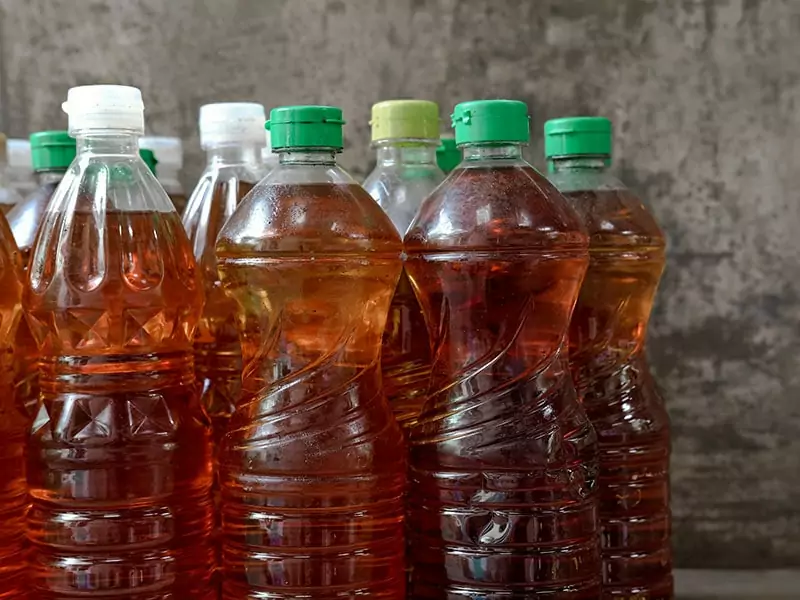
Refined peanut oil originally has a clear, somewhat light golden color. Meanwhile, gourmet oil tends to run on a darker shade of brown. As the oil in your bottle ages, it will change in color and usually darken.
If the color of your unused peanut oil is much darker than when you first purchased it, that’s a sign of rancidity, and you should discard it. A reliable rule of thumb is that the darker the color is, the more rancid it becomes.
Besides, after you get a few rounds of reuses out of peanut oil, once you notice the oil starting to get progressively dark, it’s best to replace it with another batch of oil.
3. Cloudy Consistency
If you notice the peanut oil has turned cloudy, has foam formed on top of it, or that the fats have started breaking down, it’s time for it to go. This change in clarity may not make you sick overnight, but it indicates the oil isn’t safe or good for usage anymore.
However, please note that this isn’t always the case. Cloudiness can also be a result of storing peanut oil at chilly temperatures. Refrigerated oil normally solidifies, but that doesn’t drastically change its quality or flavor.
Once you’ve pulled out the bottle of peanut oil from the fridge, you should leave it at room temperature for a while, allowing it to return to the liquid state before using it for cooking.
4. Off-Flavors
Fresh peanut oil has a light, neutral, and sometimes slightly nutty flavor. If your bottle of peanut oil has been left unused for too long yet indicates no signs of spoilage through color or clarity, it’s time to give it a final taste test to be sure.
To do so, pour a bit of peanut oil into a cup and warm it in your hands to bring the oil to room temperature. Next off, slurp roughly one tablespoon of oil into your mouth while breathing out. Make sure you don’t swallow or exhale any to get a full taste of it.
At this point, if the peanut oil tastes perfectly fine, you can go on and add it to your recipe. However, if the flavor is either completely tasteless or rancid, like fermented wine or fruits, you should toss it out.
How To Properly Store Peanut Oil?
It goes without saying that a proper storage method has a major impact on preserving peanut oil’s freshness, flavor, and quality in the long run. Let’s flick through a few tips to make the best out of the oil and achieve its maximum shelf life.
Storing Peanut Oil In The Pantry
If you plan to incorporate peanut oil in your meals on a regular basis, the best place to store it is in your pantry, where it’s easily accessible. This applies to both sealed and freshly opened bottles.
The peanut oil should be kept in a good-quality container that’s always tightly screwed in a cool, dry, and dark place. The reason is that direct sunlight, warm temperature, and humidity are the biggest factors that cause the oil to go rancid over time.
Additionally, you should choose a cabinet or pantry that’s far away from the dishwasher and stove, given the drastic temperature changes around these pieces of equipment.
For home cooks who stock a big can of peanut oil in their kitchen, a great solution is to take some oil out in a small bottle for everyday cooking and refill the bottle once emptied. This way, you won’t need to open and close the big can too often, thus preserves its freshness for longer.
Storing Peanut Oil In The Refrigerator
Whether space is tight in your kitchen or that peanut oil doesn’t play a major part in your cooking recipes, refrigeration might be your best bet. If you plan to put a bottle of oil into the fridge, make sure to transfer it to a cold-resistant container like a glass jar.
You might notice the oil starting to turn cloudy or thick in the fridge. But don’t fret! This is entirely normal and doesn’t affect its quality or flavor. Simply take the oil out and let it sit at room temperature, set your kitchen timer to 30 minutes, and wait until it turns clear again.
In addition, after each use, it’s crucial to double-check that you’ve sealed the container’s lid tightly. Not only does this helps to preserve the oil’s freshness, but it also wards off any frosting from the fridge.
This also goes for storing peanut butter, another product from peanuts. While the answer to “Can peanuts really spoil?” is still up to debate, there’s no doubt that improper methods means that you’ll have to find other alternatives for peanut butter soon. So be careful!
Let’s hear it from the expert to see how you should actually store peanut oil and other types of cooking oils in your kitchen!
Can You Freeze Peanut Oil?
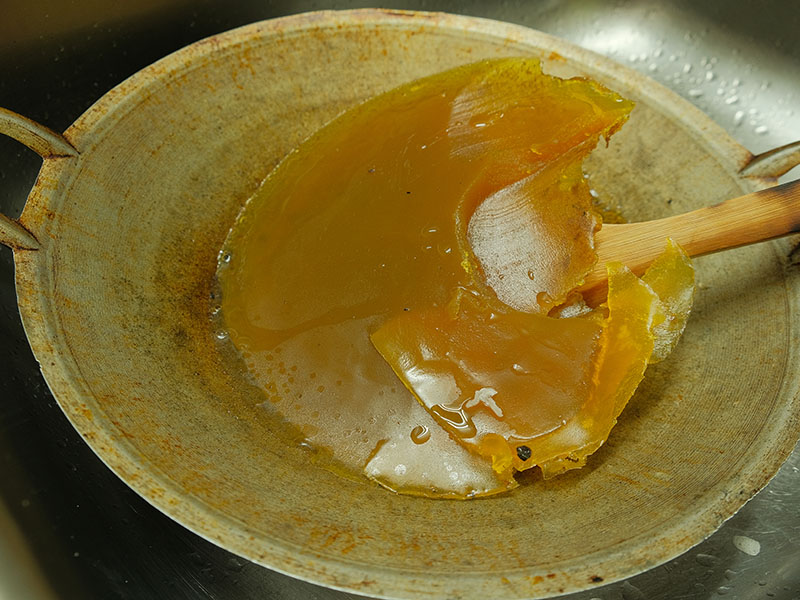
Generally speaking, peanut oil is more often considered to be a shelf-stable item. As a result, you can freeze this type of oil, but it’s not the most recommended storage option. It’s also notable that the oil’s flavor and aroma tend to be altered once frozen.
If you must freeze your peanut oil, consider freezing it in small portions with an ice cube tray to make it easier for thawing later on. Once these cubes are fully frozen, you can transfer them to an airtight, good-quality freezer container like a non-reactive metallic or a glass jar.
Also, don’t forget to mark the date that you freeze this oil. Like other vegetable oils, peanut oil solidifies and changes its clarity in the freezer, making it harder to detect rancidity if left for too long before use.
How To Defrost Frozen Peanut Oil?
Thawing frozen peanut oil is as easy as it is. If you have plenty of time for dinner preparation, simply take it out of the freezer, put the oil on a large and nice defrosting tray, and allow it to sit at room temperature until the oil returns to its original liquid form.
On the other hand, if you’re short on prep time and need to start your dish right away, you can speed up this thawing process by putting the oil in the microwave or in a pan on the stove.
In fact, any seasoned cook knows that after thawing, peanut oil’s molecule structure has a tendency to become weaker. Hence, the oil will go rancid quickly if not cooked and used immediately upon thawing.
The Best Way To Dispose Of Peanut Oil
Eventually, you’re going to end up with spoiled, rancid, or simply leftover oil that you don’t want to use anymore.
Rather than pouring it straight down the sink or outside on the ground, which can lead to clogging or numerous wildlife problems, here’s a stepwise guide on how you can responsibly and easily dispose of used peanut oil.
Step 1: Let The Oil Cool Down Completely
Hot oil can be extremely dangerous. Handling peanut oil without care while it’s still hot poses a major risk of burns. Thusly, it’s crucial that you let it cool down completely before starting to assess how to get rid of it.
If you prefer handling solid waste rather than liquid oil to minimize the mess, another option is to pour the oil into an old can and put it into the freezer for a few hours.
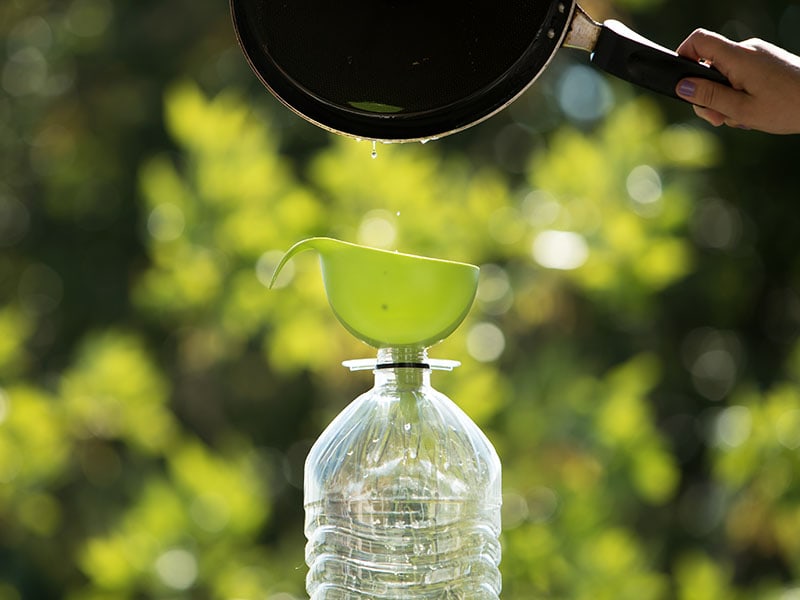
Step 2: Pour It Into A Sealed Container
With cool liquid peanut oil, you should pour it into a non-breakable, solid container with a sealable lid, such as an old can or plastic bottle. Along with the oil, if possible, toss in some absorbent materials like the coffee ground or food scraps to soak up the liquid.
On the other hand, for peanut oil that has turned into a solid texture, you can take a spoon and then scoop it out into a plastic-lined or takeaway container, and it should be ready to go.
In both cases, it’s best to avoid using a fragile plastic bag, as it can break due to a large quantity of waste. Also, seal the container that you plan to throw away tightly because the last thing any homeowner would want is for their trashcans to turn into a pool of sticky oil.
Step 3: Put It Into Your Waste Bin
Finally, toss the sealed container with used peanut oil into your food waste bin. Afterward, make sure to wipe your cookware with a damp rag before washing it with a bit of dishwashing detergent to completely remove the oil.
Here’s a quick guideline on how to safely dispose of peanut oil and other types of cooking grease!
FAQs
Are you still wondering about peanut oil’s shelf life, optimal storage method, or anything regarding the topic? Continue reading to find the answer to these common questions.
Don’t Let Rancid Peanut Oil Spoil Your Dinner!
With its healthy properties and slightly nutty flavor, peanut oil is one of the top choices to incorporate into your weekly menu. However, only when it’s properly cared for and stored under ideal storage conditions will you get the best out of its quality.
To keep peanut oil at its peak state, in the long run, is just a breeze, as long as you know the basic guideline. After every use, you should always double-check to see if the bottle is tightly sealed and put in a shaded, dry place away from the sunlight.
Hopefully, my in-depth guide has helped you know how to catch early signs of spoilage as well as find the best way to store this vegetable oil. Has these storage methods worked out for you? Don’t be shy to share your thoughts and experiences with me in the comment box right here!
